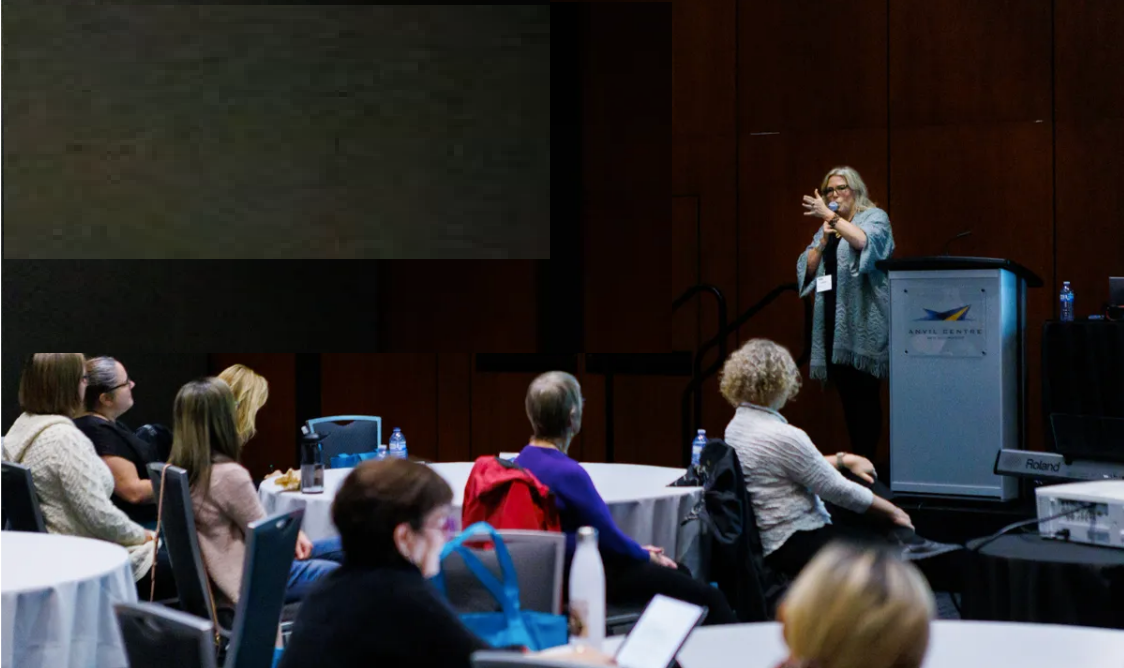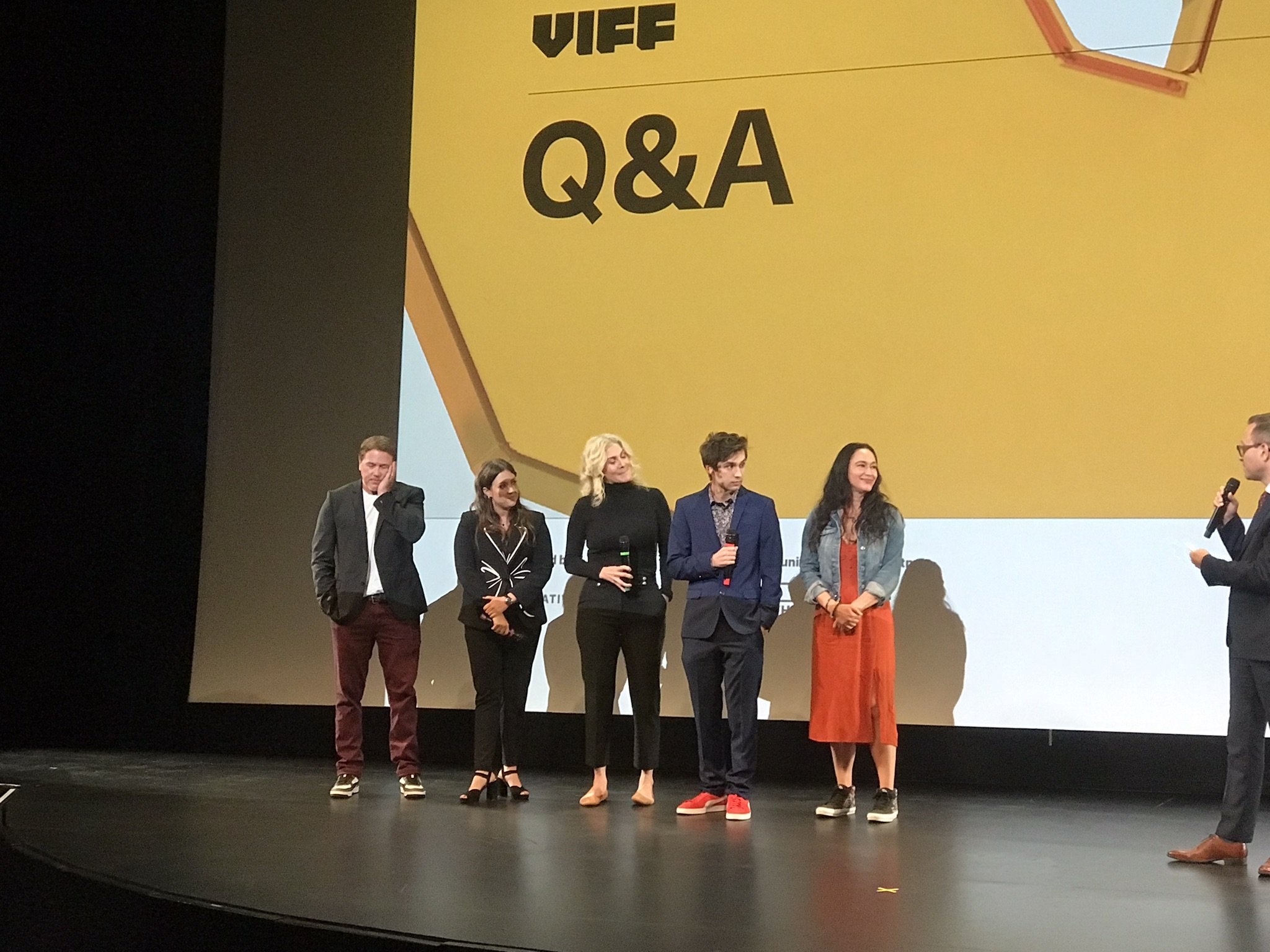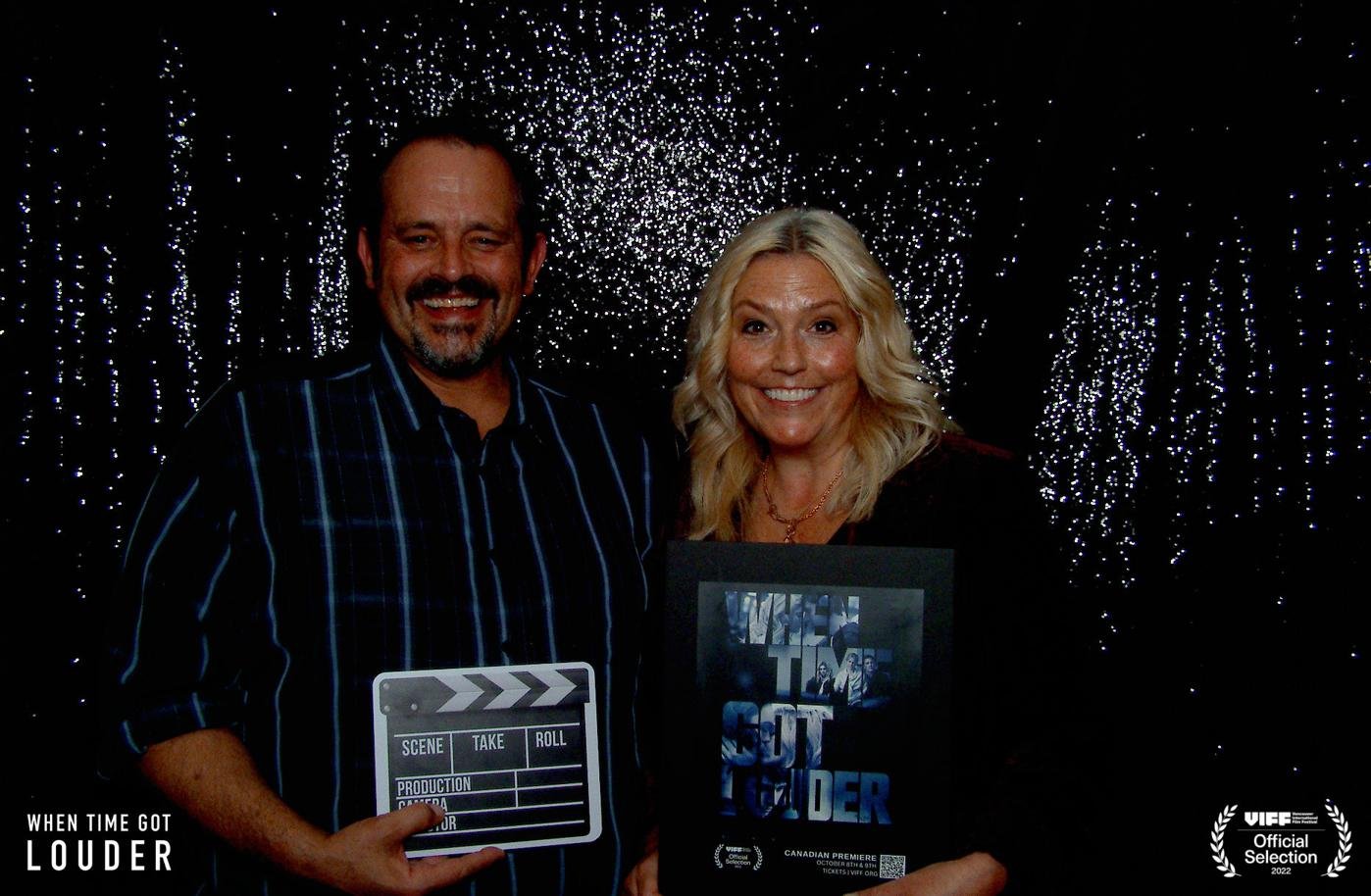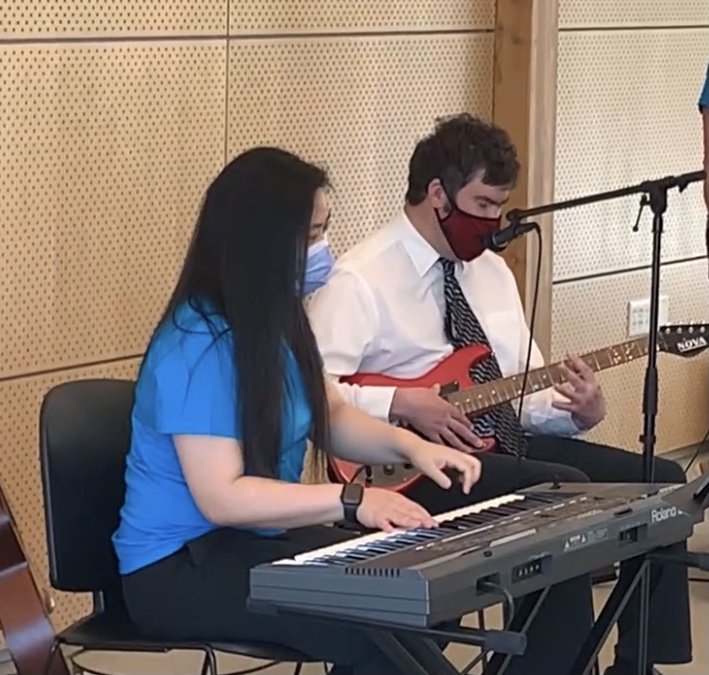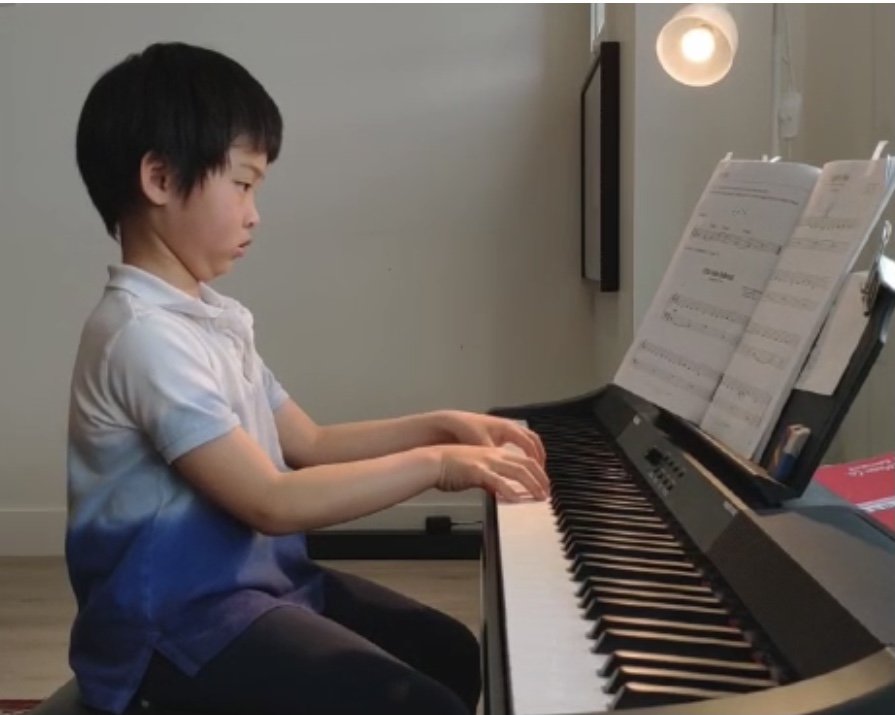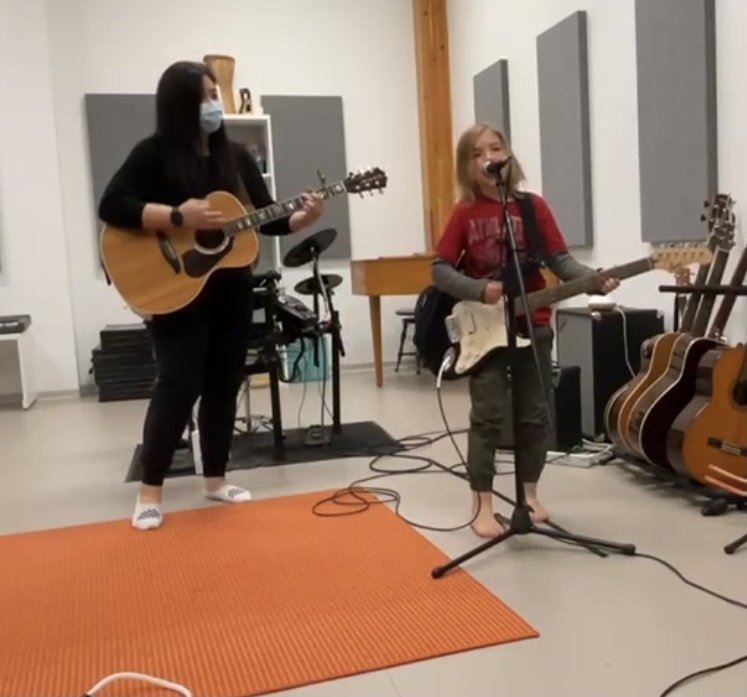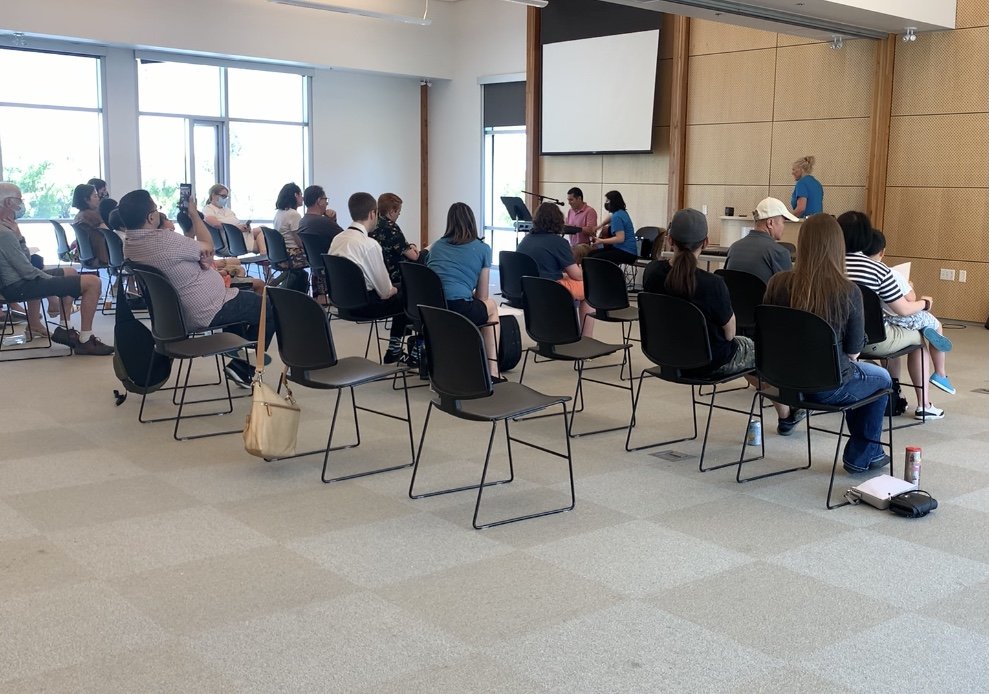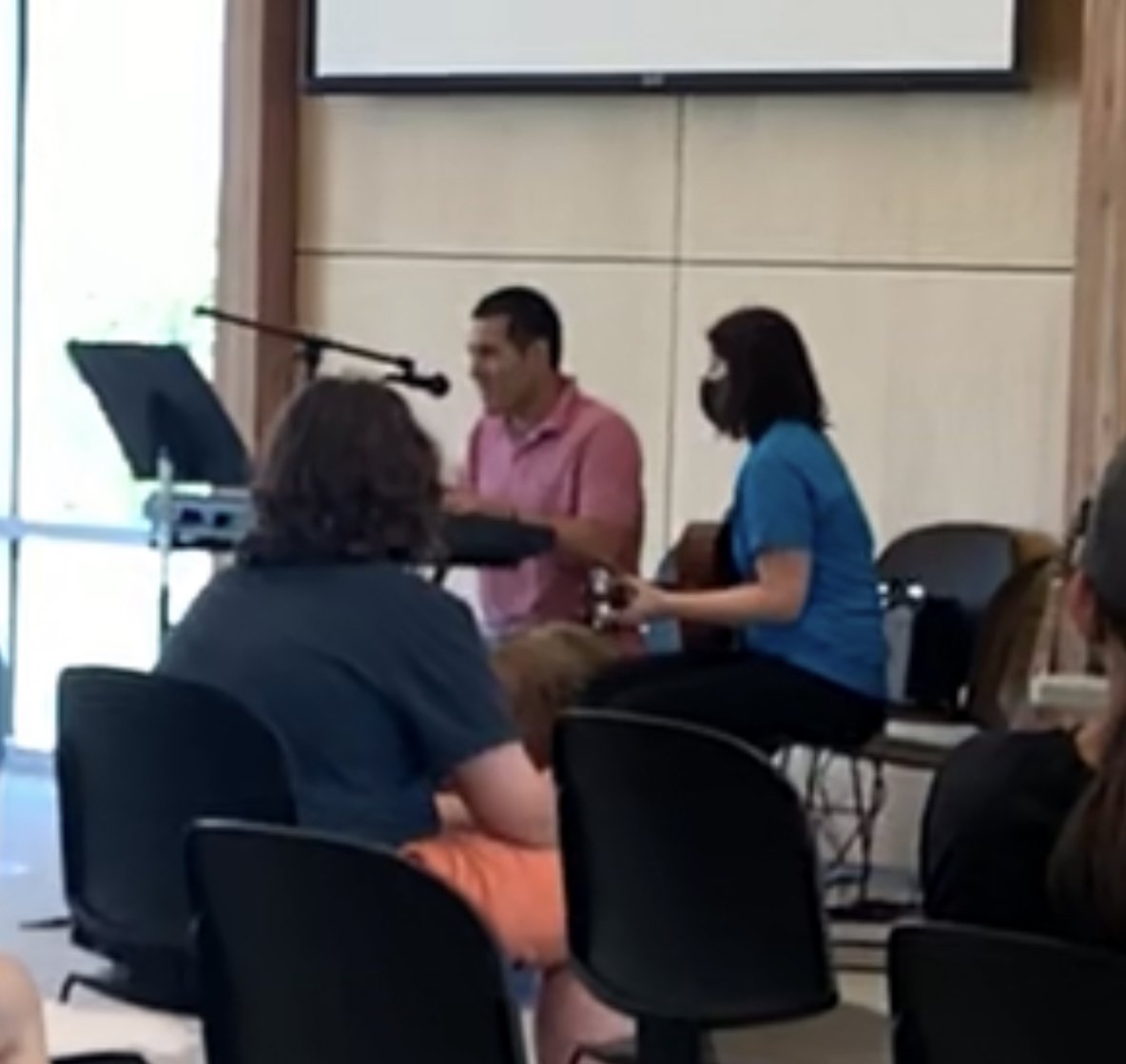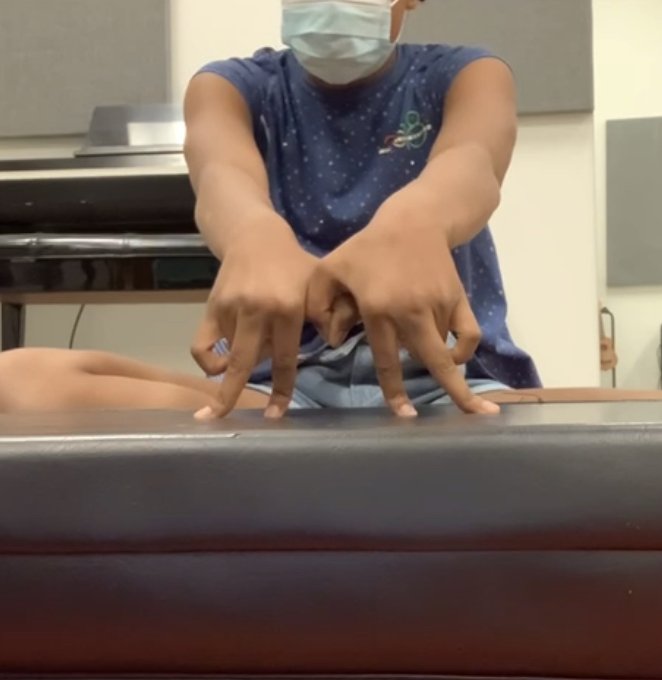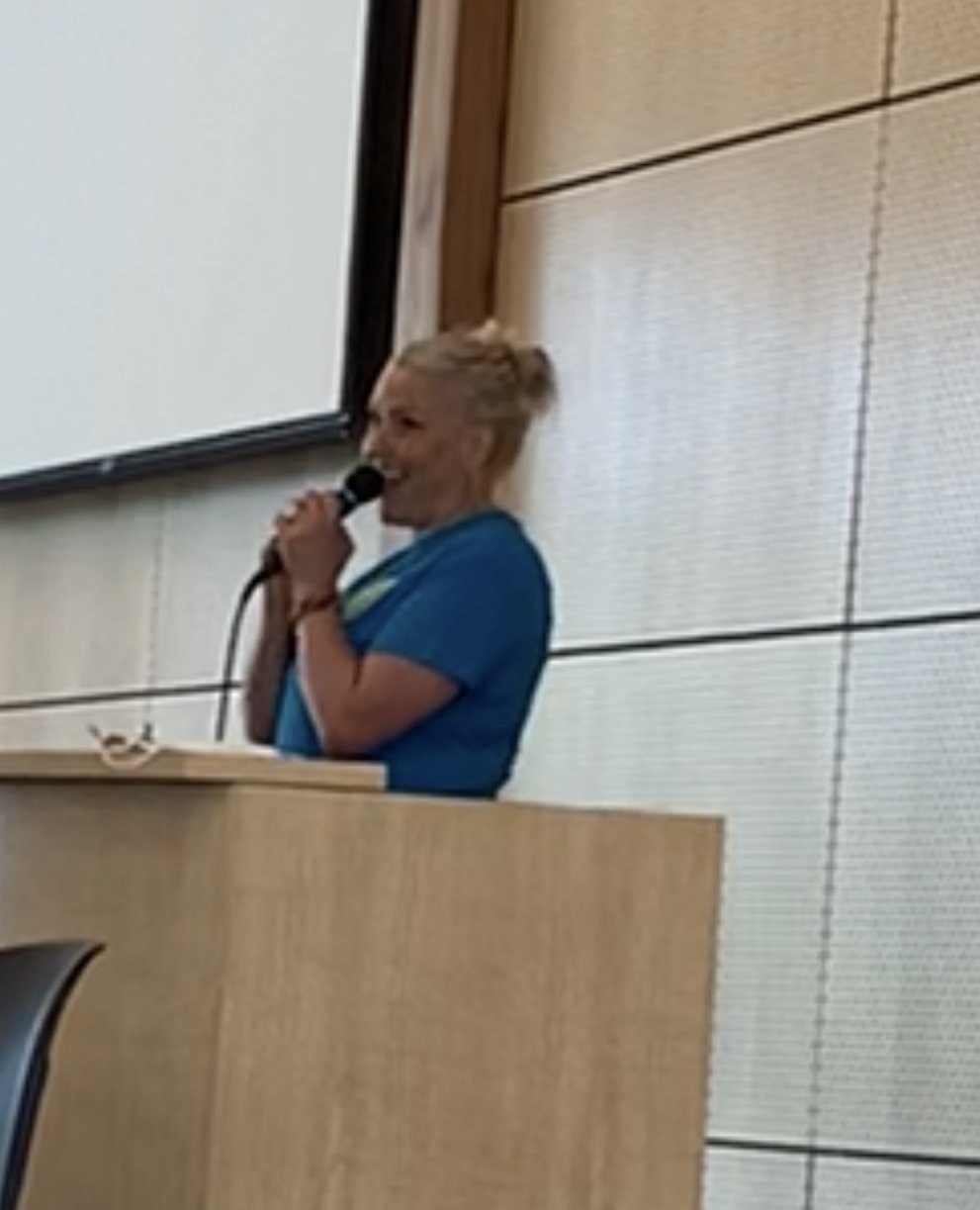The drum kit or drum set is such a versatile instrument we use with our clients. Clients can practice sequencing skills, crossing the midline, or simply enjoy a cathartic release. All ages of clients gravitate towards this instrument, from young kiddos, to teens and older adults. Perhaps it’s the combination of drum timbres and cymbals, or memories of our favorite band, that make us all want to access our inner drummer!
Why Use a Visual Schedule?
At ET Music Therapy, we often use visual supports in our sessions. Every instrument and music therapy activity is represented with pictures, making it easier for our clients to make choices and take an active role in their sessions. This empowers them, ensuring their voice and preferences are heard.
Each session begins with a visual schedule, created together by the therapist and the client. Sometimes, the therapist will pre-select a set of activity choices and place them on what we call a choice board. The client then completes their schedule, deciding the order of activities. As each activity is finished, the client removes the picture from the schedule and places it in the “finished” envelope—a simple but rewarding action that brings a sense of accomplishment.
Throughout the session, clients can check their visual schedule at any time. This helps with self-regulation, auditory attention, and reassurance, while also supporting pacing skills—a key aspect of many of our therapy goals.
Flexibility is built into the process. Clients can adjust their schedule if they change their mind. And if time runs out before completing all activities? That’s OK! This moment provides a natural opportunity to practice flexibility, showing that it’s alright to leave something for next time. At ET Music Therapy, we create a structured yet adaptable environment—one that supports confidence, independence, and joy as we Meet in the Music. 🎶✨
What training does a music therapist have?
Music therapists undergo extensive training across multiple disciplines. In Canada, a minimum of a Bachelor’s degree in Music Therapy is required to practice, with many therapists pursuing advanced degrees such as a Master’s or PhD in Music Therapy. The Bachelor's degree typically takes 4-5 years to complete.
improvising at the piano with a client
Before even entering university, music therapy students usually have years of experience in music instruction, often mastering multiple instruments, choir participation, and music theory. During their formal education, they continue refining their skills in guitar, piano, and vocals, while also taking courses in areas such as:
Biology
Ear Training & Sight Singing
Music History
Psychology (including Child Development, Aging, and Psychopathology)
Counselling & Interpersonal Skills
Group Dynamics
Health Conditions in Childhood and Adulthood
Creative Arts
Improvisation
Research & Statistics
As part of their training, students complete practicums at various sites, including hospitals, schools, senior care facilities, and rehabilitation centers.
Upon completing the four-year degree program, candidates undertake a 1,000-hour internship. After this, they must pass a board certification exam to become a licensed music therapist.
What does a music therapy sessions look like?
Customizing Music Therapy Sessions: Tailored Approaches for Every Age and Support Level
At ET Music Therapy Inc., we understand that each client is unique, which means that no two music therapy sessions are the same. Our approach adapts to the age, abilities, and level of support each individual needs. Here's a look at some of the different components that may be incorporated into our sessions:
Music Therapy Activities: Based on the *Meet In The Music (MITM)* curriculum, developed by our Executive Director, these activities are designed to promote emotional, cognitive, and social growth through music.
Adapted Music Lessons: Some sessions focus entirely on learning an instrument, whether it's piano, guitar, drums, voice, or violin, with adjustments made to suit each client's abilities.
A Combination of Music Therapy and Adapted Lessons: In many cases, we blend music therapy activities with instrument lessons, creating a balanced approach that fosters both personal and musical development.
Rock Band Components: For some clients, especially teens and older children, playing in a group setting with a rock band format offers an exciting and collaborative way to engage in therapy.
Psychotherapy Components: In sessions that require deeper emotional exploration, we integrate psychotherapy techniques to address mental health needs.
Sing-Alongs: These sessions are an excellent way to build connection, encourage participation, and practice vocal skills in a fun, engaging environment.
Song Writing: For some clients, song writing provides an incredible cathdic release and helps create self identity and confidence.
Using a Visual Schedule for Younger Children
For our younger clients, we often use a *visual schedule* to provide structure and help them feel more secure during sessions. This schedule is a timeline of activities represented by labeled image cards with corresponding text. At the start of each session, the therapist and child collaborate to create the schedule for the day. Both can choose activities, making the process dynamic and flexible. If the child wants to change the order or switch activities during the session, they can easily do so with the therapist’s support. This flexible system encourages autonomy while providing predictability and reassurance, aiding in self-regulation and smoother transitions between activities.
Hello and Goodbye Songs: Creating Rituals for a Smooth Transition
For younger clients, our sessions begin and end with ritualized *Hello* and *Goodbye* songs. These simple songs serve as anchors, helping the child settle into the session and transition out at the end. The Hello Song helps orient the child to the new environment and the therapist, while the Goodbye Song signals the completion of the session, preparing them to leave the space. Between these songs, the session is open to exploration, guided by the visual schedule and the child’s preferences.
Each session is a carefully curated experience designed to meet the needs of the individual client. Whether focusing on developmental skills, musical skill-building, or both, our sessions aim to create a nurturing and productive environment for personal growth.
Music and autism- what’s the connection?
Music is a language—a universal, non-threatening language. In music therapy, we can communicate without using words. For example, I say something to you with my drum, and you respond with your xylophone. This can be an effective way to communicate with children who are non verbal. In our experience, many autistic individuals seem to have a natural affinity for music, and in some cases, even a heightened ability. This makes music a powerful catalyst for connection and development in those with autism.
Research has shown that music is often a strength for autistic individuals. For example, Absolute Pitch (also known as perfect pitch) is more prevalent among autistic individuals. Additionally, studies suggest that music improves social communication skills and auditory-motor connectivity in autistic kiddos. Engaging in musical activities stimulates these connections.
When we combine this with the intrinsic interest most children have in music, we create a recipe for success. Music can be the bridge between a child and the therapist, fostering trust and building a relationship. Through music, we can work on a myriad of developmental skills such as attention, social interaction, communication, and motor coordination—all while engaging the child’s natural interests.
But what about children with auditory sensitivities, like those who need to wear noise-canceling headphones? Parents often ask how music therapy can help when their child is sensitive to sound. Interestingly, many of these parents have observed that their child can bang a drum loudly without issue. How can this be?
When a child strikes a drum, their brain is able to prepare for the sound in advance. Because they are in control of the sound production, their body can adjust. It’s often the random, unexpected sounds in the environment that cause distress, not the sounds they create themselves. In music therapy, repeated exposure to controlled sounds—like cymbals, triangles, or drums—can help reduce auditory defensiveness. Over time, the child becomes more comfortable with louder or higher-frequency sounds.
How can music help improve social and communication skills? Music can be the entry point. As a language of its own, we can meet in the music. Through shared musical experiences, we can practice turn-taking, listening, and non-verbal communication—all essential for social interaction.
Music therapy offers a creative and effective way to connect with autistic individuals. It supports their strengths, respects their unique learning styles, and opens doors to communication and development.
Do Music Therapists Complete Assessments?
How much does an assessment cost?
Assessments are charged at the same rate as a regular music therapy session.
How long does an assessment last?
Music Therapy assessments typically take place over 2-4 sessions. For many neurodiverse individuals, it can take a few sessions to adjust to the new studio environment and begin building rapport and trust with the therapist. Allowing time for this adjustment is crucial for making a well-rounded and informed decision about continuing sessions.
In the first session, it’s common for individuals to feel dysregulated—they might explore the room, interact with various instruments for only short periods of time, hesitate to enter the space, or even want to leave shortly after arriving. This is natural and quite common. Feeling comfortable in a new environment and with new people takes time.
What happens in assessment sessions?
For the individual, an assessment session feels just like any other music therapy session. During these sessions, our therapists introduce a wide range of musical experiences to see what resonates most with each person. We observe which instruments and activities each individual gravitates towards—whether it’s stringed instruments, keyboards, vocals, or drums.
We believe that one will integrate new skills at a deeper level if they stem from a place of inner motivation and curiosity.
For example, some individuals may:
Show a strong preference for rhythm and percussion
Require or enjoy a lot of movement
Prefer to improvise throughout the session
Thrive in structured activities that incorporate visual aids, such as picture cards
Next Steps?
After each session, we update the individual’s assessment form within our cloud platform, UnitusTI. Over the course of 2-3 weeks, we analyze the assessment data to create a personalized goal plan tailored to their unique needs and strengths.
For more information, complete a CONTACT US form to schedule a phone chat with our Executive Director:
What is music therapy for kids?
Here’s a simple definition:
Music therapy focuses on non musical goals THROUGH music!
Music therapists target the same skill development areas as speech therapists, behavior consultants, and occupational therapists, addressing needs like self-regulation, attention span, motor skills, language acquisition, social skills, impulse control, sensory integration, and more. Most humans on the planet have a connection to music, making it an effective catalyst for positive change. In a music therapy session, multiple skills are often addressed simultaneously. For instance, when a child actively plays a drum, they're not just making music—they’re also working on eye-hand coordination, self-expression, conversational skills, and perhaps even crossing the midline.
Research shows that engaging in music activates various parts of the brain, including the temporal lobe, limbic system, auditory cortex, and motor cortex. At ET Music Therapy, we believe that when learning is driven by a child’s intrinsic motivation and curiosity, they’re more likely to deeply integrate new skills. Music provides a joyful and engaging way to foster this growth.
Are music lessons a part of sessions?
Music therapy can include adapted music lessons on instruments such as piano, voice, guitar, drums, and even violin! For younger children, we may incorporate a portion of the session as a formal music lesson, depending on the child’s level of engagement and attention span. This could range from a 20-minute segment to an entire session. Typically, children are developmentally ready for music lessons around age six.
So, how do these lessons differ from standard music instruction? Our therapists are trained to recognize and respond to sensory issues, levels of arousal, engagement, and other individual needs. For example, we might pause a lesson to engage in gross motor movement to help a child maintain focus and enthusiasm. For older children, teens and adults, the lesson segment might occupy the entire hour.
What training do music therapists have?
Music therapists hold a minimum of a Bachelor of Music Therapy degree or its equivalent. Their education covers a broad range of subjects, including psychology, childhood and adult disabilities, counseling techniques, and extensive music instruction. This specialized training equips them to tailor their therapeutic approach to each individual's unique needs. And of course, music therapists have completed many years of music instruction, prior to becoming a music therapist.
What does a session look like?
Music therapy sessions are weekly, dedicated 1 hour session time slots with the same music therapist, to build trust, rapport and relationship.
For younger kiddos, sessions are bookended with a hello and goodbye song. Hello songs help orient a child to the therapy space. Goodbye songs help transition the child comfortably out of the session.
The "meat" of the session is highly flexible and responsive to the child’s needs. The therapist and child work together to decide on session activities, often using a visual schedule with pictures representing different music therapy experiences. These may include structured music games with visual reinforcers, improvisation, or exploring various musical instruments.
Music therapy sessions are always personalized to match the individual’s musical preferences, a collaborative experience between the therapist and the individual. We meet in the music.
To schedule a phone chat about our program, fill out a contact us form:
Drum Circle for students- Vancouver Canada West University- Wellness Camp 2024 Drum Circle
What a pleasure providing the space for drum circles for the students at Vancouver Canada West University’s Wellness camp this year. They were so energized and refreshed after participating in our drum circles.
Esther Thane’s Aspika Talk
Our Director Esther Thane completed an ASPIKA TALK on Aspika T.V. Aspika is a 21st Century innovating global approach to personal and professional advancement for high school graduates and university students - providing tools, resources, community support, and advocacy involvement to the neurodiverse community. Founded by Rita Hernandez. See Esther's Aspika Talk Here:
Capilano University Alumni Award
We are thrilled to announce that Esther Thane, a CapU Bachelor of Music Therapy alumna, has been awarded the Luminous Award at the 2024 Alumni Awards of Excellence!
Announcing the Opening of our Third Studio
We are proud to announce the opening of our third music therapy studio location. Inticing instruments to explore, beautiful lighting, and a central location- located on the 2nd floor of the Pacific Autism Family Centre in Richmond. We are offering afterschool and weekend session time slots.
Rap for Expression!
Here is an excerpt from one of our long time clients! Rapping is a loved expressive outlet for this kiddo! And he is so good at it! His language has skyrocketed over the years and he has a deep bond with his therapist. Enjoy!
Music Care Conference 2022 Presentations- New Westminster BC
Esther Thane, presenting for the attendees
The Music Care Conference started in Canada in 2010. In 2018 we united with our friends and colleagues in the UK to bring together a larger collaboration of knowledge and expertise on a global scale! In 2022 we are looking at Music & Wellness. How does music help provide a pathway to both physical and mental wellness. We come together with a common goal to enhance quality of life and improve the care experience through music!
Our Director, Esther Thane offered two workshops at the conference:
MEET IN THE MUSIC: PRACTICAL TOOLS FOR WORKING WITH THE AUTISTIC CHILD
ROOTED IN MUSIC: RELAXATION FOR SELF-CARE
The Emerging Voice- by Lou Latil
I love singing. As a music-therapist, singing for and with my clients is one of the favorite components of my work. Losing my voice is one of my biggest fears. It happened before, temporarily, and I felt helpless, empty, deprived of my favorite way of communicating and expressing. How could I express myself without it?
When I was in France, studying for my master’s degree in music therapy, I was hired as a trainee in a medical and educational institute hosting teenagers between 12 and 20 years old. I learnt from them that without a voice or language, communication was still possible- if one was open and receptive to it. Music is, of course, one of these possible outlets, and I have seen fantastic things happening there.
Since working with ET Music Therapy, I have had special connections with my clients. One of my current clients, (we'll name him John) reminds me of one of the teens I worked with at the very beginning of my career: a teen from which I learned many useful strategies for my profession. John didn’t have access to language, and for the first few sessions, I didn’t hear any sound coming from him. John showed me his enjoyment with music therapy when coming into the studio and when playing music with me during his weekly sessions. Although he smiled a lot, not a sound came out.
After a month or so, I started to hear laughs and internalized sounds when he was happy or excited. Then one day, it happened. I heard Jonh's voice for the first time. He imitated me on a couple of sounds into the microphone. The caregiver who was there with us was astonished, saying: “I didn’t even know he could do that or make any sound”. For me, that was one of the most satisfying moments I experienced since working here. I wasn’t surprised however, although very proud and happy for John.
It is never too late to find our way to our own voice. Sometimes we only need to have someone to believe it’s in there... somewhere... deeply hidden. And when it comes out, it opens a completely new world of exploration. A couple of weeks later, John sang in the microphone spontaneously: a couple of long and low vocalizations.
This is just the beginning.
Vancouver International Film Festival- launch of WHEN TIME GOT LOUDER
So honored to be a part of this Canadian film debut experience at the Vancouver International Film Festival! 'When Time Got Louder' is a spectacular film written and directed by the incredibly talented Connie Cocchia Inspiring performances of ELIZABETH MITCHELL, Jonathan Simao, Willow Shields, Lochlyn Munro, Sharon Taylor and Ava Cooper. The cinematography and music were exquisitely created. This is a film about a family with a neurodivergent teen, family struggles, growing up, and the bond between two siblings. Highly recommend seeing this movie if you get the chance!
CJAM Radio Interview
Our Director Esther Thane was invited to do an interview for CJAM Radio (Ontario) on their program: HANDI-LINK. This program focuses on disability issues. The host Cam Wells explores all sides of this comparing and contrasting with able bodied life.
Click here to listen to Esther’s segment, start the play at “720”: Handi-Link Radio Program
Encouraging Abilities Podcast
Listen as Esther Thane, Executive Director speaks on Music Therapy- A Universal Language
ET Music Therapy Concert
What a lovely Sunday morning listening to and watching some of our clients perform their own original music, their cover songs, and movement to music performances. Our concerts offer a platform for our clients to share their hard work with their peers, families and friends!
Donation from Instruments Beyond Borders (IBB)
We are so blessed and grateful for a donation of some guitars from the organization Instruments Beyond Borders. We are able to offer our kiddos, teens and adults a variety of cool guitars for them to express themselves during improvisation, when exploring song writing, learning their favorite songs, or learning how to play guitar! Thanks so much IBB
Variety Show of Hearts Telethon Segment!
We are thankful for Variety- The Children’s Charity for generously funding our music therapy services at ET Music Therapy. Checkout the segment on a few of our clients




















